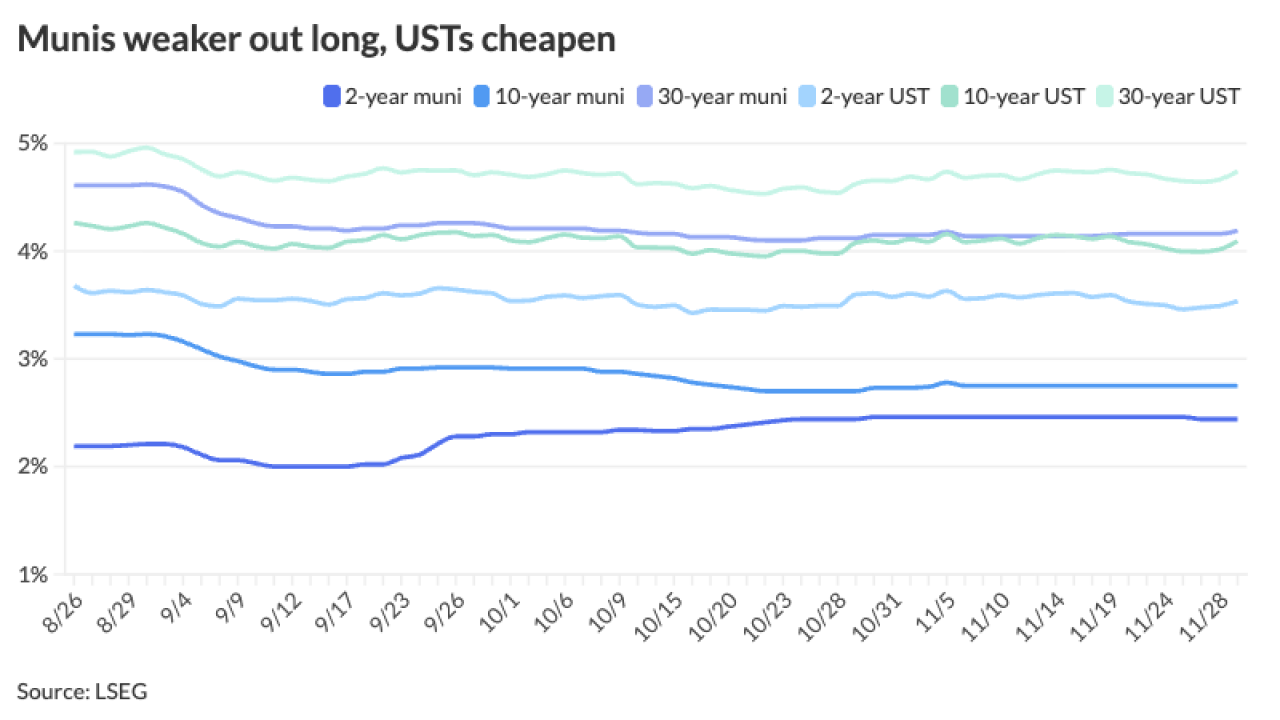
The Securities Industry and Financial Markets Association updated its model disclosure documents to help dealers through complex financings as the London Inter-bank Offered Rate (Libor) is set to phase out this year.
SIFMA released those updated documents Wednesday to help dealers comply with Municipal Securities Rulemaking Board Rule G-17 on fair dealing, reducing legal drafting costs and to increase their confidence in compliance.
The group specifically revised six of its Rule G-17 model disclosure documents for risk disclosure including floating rate notes, fixed-rate bonds, interest rate swaps, forward delivery bonds, tender offer bonds and variable rate demand obligations.
SIFMA created its Rule G-17 Model Disclosure Documents in 2012 and said it was time to update them with upcoming changes such as the Libor transition. The Secured Overnight Financing Rate is expected to replace Libor by the end of this year.
In April, the Alternative Reference Rates Committee released its fallback language, which it said was meant to provide a robust waterfall that would allow for a conversion to SOFR-based rates.
“The latest versions include clearer drafter’s notes to make it easier to utilize the model documents, address the transition away from Libor with ARRC fallback language, and add the disclosure of additional risks not previously included in the model documents,” said Bernard Canepa, vice president and assistant general counsel at SIFMA.
Some of those additional risks include extending the settlement risk to fixed-rate bond disclosure and the impact of the Securities and Exchange Commission’s money market reforms to its VRDO disclosure documents.
Since 2010, the Securities and Exchange Commission has adopted reforms to reduce investor runs on money market funds in times of financial crisis. Reforms adopted in 2014 made a significant impact on money market funds, particularly funds that invest in municipal securities such as VRDOs, SIFMA wrote in its VRDO disclosure document.
SIFMA last updated its model documents in May 2020 to respond to changes to Rule G-17's interpretive guidance approved by the SEC in November 2019. Once in effect those changes will reduce the volume of disclosures issuers receive from underwriters at the beginning of a deal, which many in the market agreed had become too voluminous and wordy to be useful.
Due to the coronavirus, the compliance date for the updated interpretive guidance has been pushed to March 31, 2021 from Nov. 30, 2020.
SIFMA wanted to make its model documents more user-friendly with clearer drafter’s notes and instructions, to help with the transition of Libor and additional risks.
“After making several important revisions to our G-17 underwriter model disclosure documents in May, we thought it was important to revisit the risk disclosures that were created in 2012,” Canepa said. “It had been a while so we wanted to look at them again.”
The group also plans to release six additional new risk disclosures soon.





